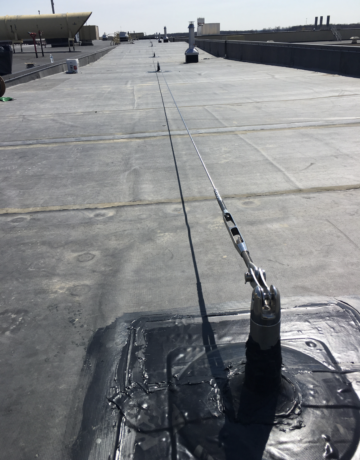Lifeline Systems
Working at heights doesn’t have to be dangerous. Using the right fall protection system ensures worker safety and regulatory compliance. While passive fall protection systems are necessary for OSHA safety measures, active fall protection, e.g., Lifeline Fall Protection using vertical or horizontal lifeline systems, is necessary.
Whether you’re operating vertically, horizontally, around bends or up inclines, our Cable Fall Protection Systems will keep your workers safe. We understand the dangers associated with occupations exposed to fall hazards. Our team of experts installs fall protection cable systems that can safely stop or arrest workers if a fall may occur. Most importantly, our use of high-quality anchors, fall arrest lanyards, and lifelines will keep your workers safe without being scared of potential risks and danger against accidents.
US Fall Protection’s fall restraint and fall arrest system can be deployed across virtually all the major roof types, including standing-seam, composite, built-up-on-site, secret-fix, and membrane. Installations do not damage the structure of the roof and therefore will not compromise the roof warranty.
The capacity of a cable system depends on the strength of the structure (it is being installed on), supports, components and the cable. US Fall Protection’s lifeline systems use unique technologies designed to absorb the loads generated in fall arrest. In the event of a fall, the integral energy absorbing systems are deployed, a single post alone being able to absorb up to 6000 J of energy, that is enough for managing three persons. This allows the system to be applied to a relatively delicate structure without the need to fix to structural steel or purlins.

Your needs are unique, so are our solutions. Either it is vertical lifeline fall protection or horizontal lifeline fall protection, we have all types of fall arrest equipment to keep you safe without restricting your mobility on a rooftop. Our solutions can both be installed on new buildings and structures, or retrofitted to existing ones. They are suitable for applications as diverse as bridges, towers, manufacturing plants, arenas and offshore platforms. Most importantly, fall arrest system has proven to be durable and reliable in virtually all climatic and environmental conditions.
If you are planning to get a personal fall arrest system, contact us. Our team of experts will guide you through the process instantly.






